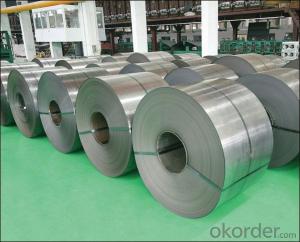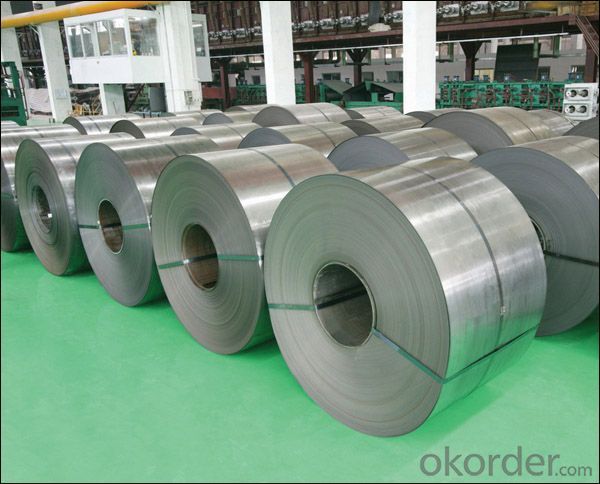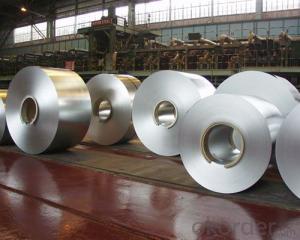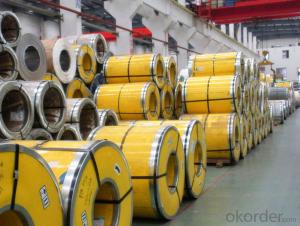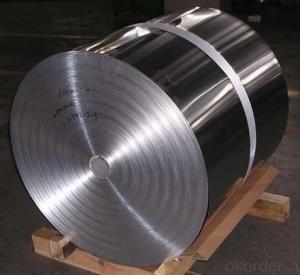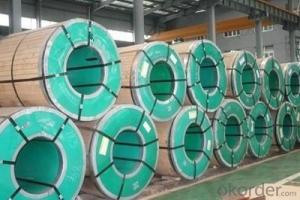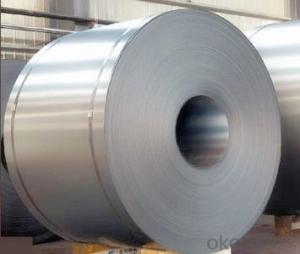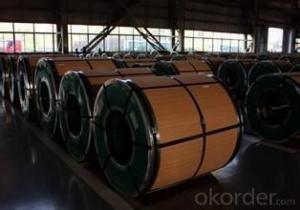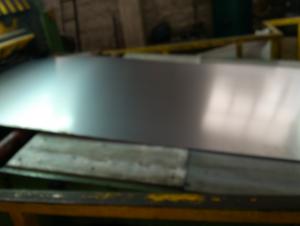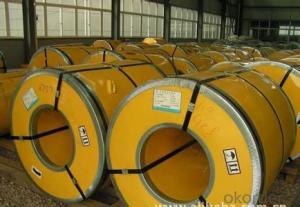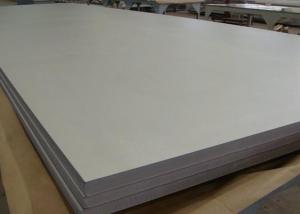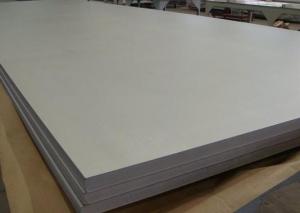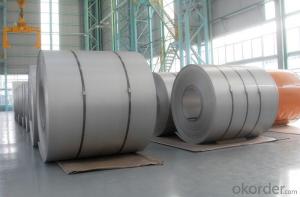Stainless Steel Coil and Sheet Hot Rolled Cold Rolled 201 High Quality
- Loading Port:
- China main port
- Payment Terms:
- TT OR LC
- Min Order Qty:
- 200 m.t.
- Supply Capability:
- 4000 m.t./month
OKorder Service Pledge
OKorder Financial Service
You Might Also Like
201 Stainless Steel Coil Hot Rolled Cold Rolled
201 Stainless Steel is a new kind of Austenite stainless steel by used Mn, N replace Ni. The steel has good corrosion resistance and hot / cold processing performance, instead of 304 stainless steel products for used in the not high of corrosive environment, such as indoor, inland city outdoor etc.
1. Product detail
Product name: 201 Stainless Steel Coil
Thickness: 0.2mm to 1.5mm
Technical: Cold Rolled
Width: 10mm to 1240mm
Type: 200 Series
Length: As customer's requested
Standard: JIS, SUS
Finish: BA, 2B, 8K, NO.3, NO.4, HL
MOQ: 200 Metric Tons
Ship Term: FOB Shenzhen port or CNF import port
Delivery Time: 15 to 20 day after the receive the deposit or LC
Packaging: By wooden pallet, wooden case or according to customer's request
2. Specialty and Applications
Steel Type | 201 Stainless Steel Coil |
Specialty | -- After solid solution treatment has high strength, toughness and wear resistance; Economical, low Ni components to ensure the cost advantage |
Applications | -- 201 Stainless Steel mainly used in decorated tube, Industrial tube and other shallow tensile productSuch as shallow processed pan, Indoor stair handrail, elevator etc |
3. Chemical Composition (Unit: WT %)
Specification | C | Si | Mn | Ni | Cr | other |
201 Stainless Steel | ≤0.015 | ≤1.00 | 7.0-10.0 | 3.5-5.5 | 14.0-16.0 | N ≤ 0.20 |
4. Mechanical Property
Specification | YS (Mpa) | TS (Mpa) | EL(%) | HV | REMAK |
201 Stainless Steel | 426 | 880 | 52 | 224 | 1.0t |
304 Stainless Steel | 285 | 710 | 58 | 165 | 1.0t |
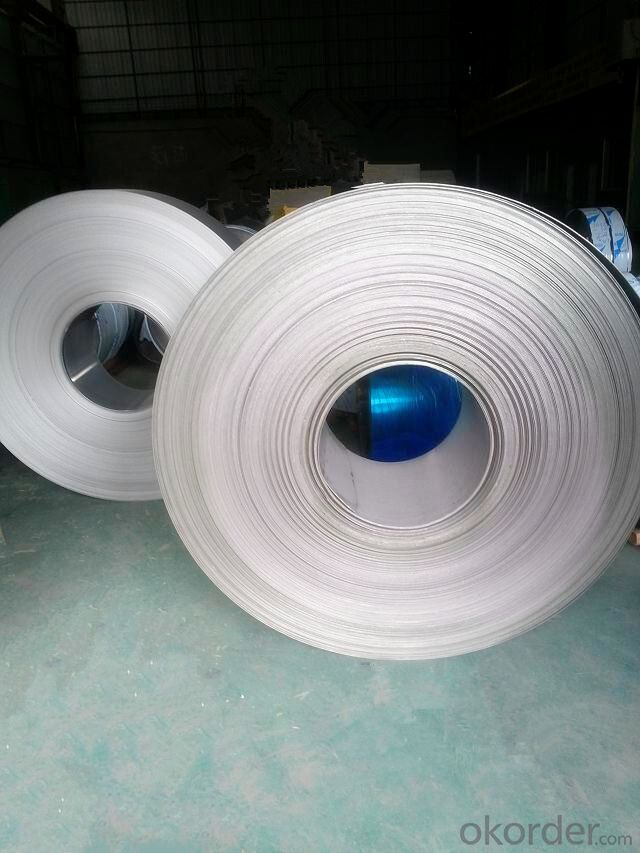
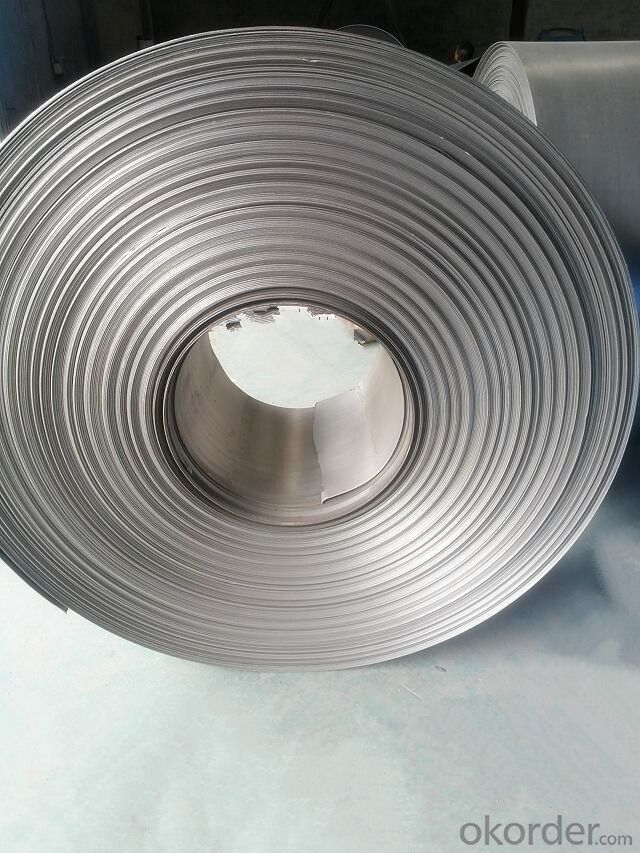
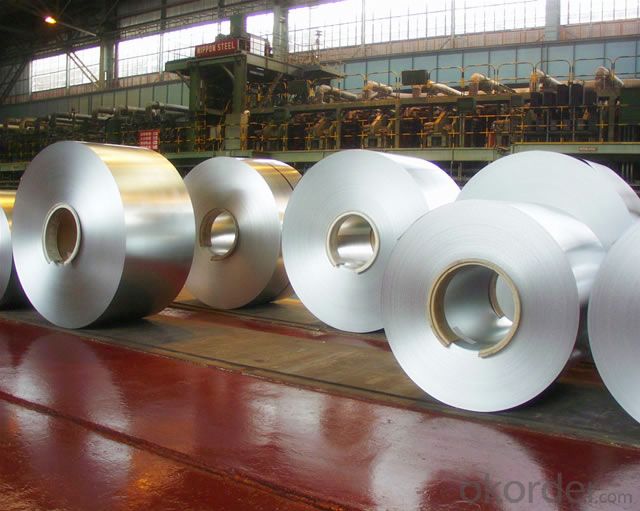
- Q: What are the advantages of using narrow width 111 stainless steel strips?
- There are several advantages of using narrow width 111 stainless steel strips. Firstly, the narrow width allows for more precise and accurate cutting, making it ideal for applications that require tight tolerances. Secondly, the 111 stainless steel composition provides excellent corrosion resistance, making it suitable for use in harsh environments or applications that involve exposure to moisture or chemicals. Additionally, the narrow width strips are easier to handle and transport, making them more convenient for manufacturers and reducing the risk of damage during transit. Lastly, the narrow width allows for efficient material usage, reducing waste and cost in production processes.
- Q: Can stainless steel strips be used in agricultural applications?
- Yes, stainless steel strips can be used in agricultural applications. Stainless steel is highly resistant to corrosion, making it suitable for use in various agricultural environments. It can be used for constructing and reinforcing agricultural equipment, such as machinery parts, fencing, and irrigation systems. Stainless steel strips also offer durability, strength, and ease of maintenance, making them a practical choice for agricultural applications.
- Q: Are stainless steel strips suitable for marine applications?
- Yes, stainless steel strips are highly suitable for marine applications. Stainless steel is known for its exceptional corrosion resistance, which makes it a preferred material for marine environments where exposure to saltwater, humidity, and other corrosive elements is common. Stainless steel strips have excellent strength and durability, allowing them to withstand harsh conditions, high temperatures, and mechanical stress commonly encountered in marine applications. Additionally, stainless steel's low maintenance requirements and aesthetic appeal make it a popular choice for various marine components such as boat fittings, marine hardware, marine fasteners, and shipbuilding.
- Q: What are the different sizes available for stainless steel strips?
- A variety of sizes are offered for stainless steel strips to accommodate different applications and needs. Typically, the width of these strips can range from 0.25 inches (6.35 mm) to 24 inches (609.6 mm). The thickness, also known as gauge, can vary from 0.001 inches (0.0254 mm) to 0.250 inches (6.35 mm). These sizes are provided to meet the demands of various industries and purposes. Smaller and thinner stainless steel strips are commonly utilized in electronic components, medical devices, and precision instruments that require a high level of accuracy and precision. On the other hand, larger and thicker stainless steel strips are frequently used in construction, automotive manufacturing, and industrial applications that require strength and durability. It is worth noting that these sizes are not exhaustive and may differ depending on the manufacturer and specific requirements of customers. Custom sizes may also be available upon request to satisfy unique project needs.
- Q: Can stainless steel strips be used in medical implant manufacturing?
- Yes, stainless steel strips can be used in medical implant manufacturing. Stainless steel is a commonly used material in the medical field due to its excellent corrosion resistance, high strength, and biocompatibility. It is often used for implants such as orthopedic devices, cardiovascular stents, and dental implants.
- Q: What are the limitations of using 111 stainless steel strips?
- Some limitations of using 111 stainless steel strips include potential corrosion issues in certain environments, limited strength compared to other stainless steel grades, and higher cost compared to other materials. Additionally, 111 stainless steel may not be suitable for applications requiring high temperature resistance or extreme mechanical properties.
- Q: What are the common dimensions of stainless steel strips?
- The common dimensions of stainless steel strips can vary depending on the specific application and industry. However, there are some standard dimensions that are commonly available. Stainless steel strips are typically available in widths ranging from 0.5 inches to 24 inches (1.27 cm to 60.96 cm) and thicknesses ranging from 0.005 inches to 0.25 inches (0.0127 cm to 0.635 cm). Lengths can vary depending on the supplier and the customer's requirements, but standard lengths are often around 12 feet (3.66 meters) or 20 feet (6.1 meters). It is important to note that these dimensions are not exhaustive and can vary depending on the specific needs of the project or industry.
- Q: Are stainless steel strips suitable for decorative etching?
- Yes, stainless steel strips are suitable for decorative etching. Stainless steel is a versatile material that can be etched and engraved with intricate designs and patterns. It has a smooth and polished surface which makes it ideal for creating detailed and visually appealing decorative etchings. Additionally, stainless steel is highly durable and resistant to corrosion, ensuring that the etched designs will remain intact for a long time. This makes stainless steel strips a popular choice for various decorative applications such as signage, jewelry, art pieces, and architectural elements.
- Q: How do you remove scratches from stainless steel strips?
- To remove scratches from stainless steel strips, you can start by cleaning the surface with a mild detergent and soft cloth to remove any dirt or debris. For minor scratches, you can try using a non-abrasive stainless steel cleaner or a mixture of baking soda and water to gently buff the affected area. Rub the cleaner or paste in the direction of the grain using a soft cloth or sponge. For deeper scratches, you may need to use a fine grit sandpaper or stainless steel scratch removal kit, following the manufacturer's instructions. Remember to always test any cleaning or polishing product on a small, inconspicuous area first to avoid further damage.
- Q: What are the standard coil sizes for stainless steel strips?
- The standard coil sizes for stainless steel strips typically range from 0.25 inches to 12 inches in width and 0.020 inches to 0.125 inches in thickness. However, these sizes can vary depending on the specific manufacturer and customer requirements.
Send your message to us
Stainless Steel Coil and Sheet Hot Rolled Cold Rolled 201 High Quality
- Loading Port:
- China main port
- Payment Terms:
- TT OR LC
- Min Order Qty:
- 200 m.t.
- Supply Capability:
- 4000 m.t./month
OKorder Service Pledge
OKorder Financial Service
Similar products
Hot products
Hot Searches
Related keywords
